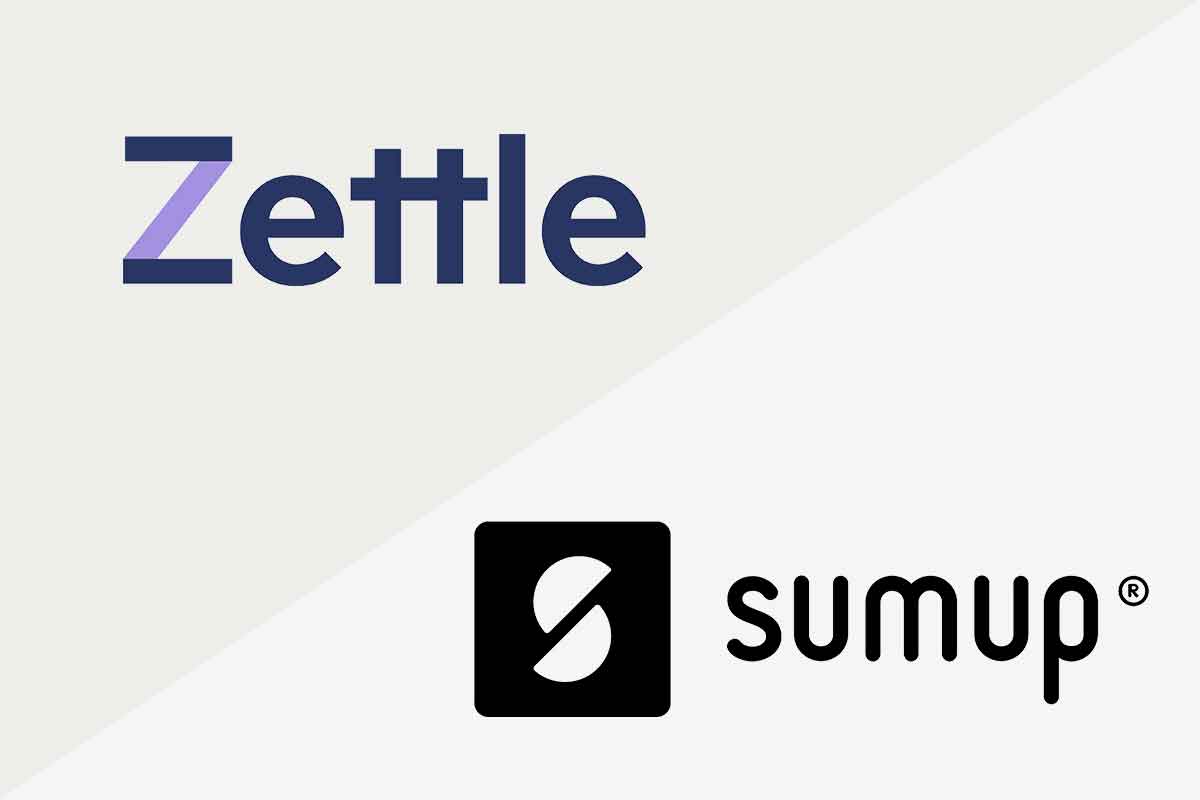Are you considering Zettle vs SumUp? In an increasingly digital world, businesses are recognising the necessity of providing flexible payment options for their customers. As contactless transactions continue to rise, small and medium enterprises (SMEs) are integrating modern payment solutions into their operations.
Two leading companies in this sphere, Zettle vs SumUp, offer innovative point-of-sale (POS) systems and payment processing services. But how do they stack up against each other? Let’s take a deep dive into their offerings.
Featured pro tools
Zettle vs SumUp
| Criteria | Zettle | SumUp |
|---|---|---|
| Card Reader Cost | £29 + VAT | £29 + VAT |
| Transaction Fees | 1.75% per transaction | 1.69% per transaction |
| Payment Time | 1-2 business days | 2-3 business days |
| POS App | Zettle Go (advanced features) | SumUp App (basic features) |
| Customer Support | Phone and email on weekdays, email on weekends | Phone and email from Monday to Saturday |
| Inventory Management | Yes | No |
| eCommerce Integration | Yes (WooCommerce, Shopify, BigCommerce) | No |
| Staff Accounts | Yes | No |
| Hospitality Software Integration | Yes (iKentoo, Tabology) | No |
| Receipts | Digital (email or SMS), can connect to compatible printer for paper receipts | Digital (email or SMS), can connect to compatible printer for paper receipts |
| Contract | No monthly fees or contractual obligations | No monthly fees or contractual obligations |
| Offline Payments | No | No |
| Gift Cards | Yes | No |
| Hardware | Additional POS hardware available at extra cost | Additional POS hardware available at extra cost |
Understanding the basics
Zettle
Zettle, formerly known as iZettle, is a Swedish payment service provider that became part of the PayPal family in 2018. The company aims to simplify the process of accepting card payments for small businesses. It offers a portable card reader that connects via Bluetooth to a mobile device with the Zettle Go app, turning it into a mobile POS system.
SumUp
SumUp, a London-based company, provides a similar service to Zettle, offering a card reader that pairs with a smartphone or tablet via Bluetooth. The SumUp App then helps manage payments, track sales, and provide real-time reports on transactions.
Getting down to the features
Let’s examine some key features of both providers to help you understand which might be the better fit for your business.
Card readers
Both companies offer compact, portable, and user-friendly card readers. However, there are slight differences:
- Zettle Reader 2 accepts chip and pin, contactless, and mobile payments, and costs £29 + VAT.
- SumUp Air Card Reader supports similar payment methods and costs £29 + VAT.
Transaction fees
Every time a payment is made using a card reader, the payment service provider charges a small fee.
- Zettle charges a flat fee of 1.75% per transaction, irrespective of the card type or payment method.
- SumUp offers a slightly lower fee of 1.69% per transaction.
In both cases, there are no monthly fees or contractual obligations.
Payment processing times
It’s important to consider how quickly the funds from transactions are available in your business bank account.
- Zettle promises funds within 1-2 business days.
- SumUp can take slightly longer, generally transferring funds within 2-3 business days.
Software and point-of-sale system
The POS systems offered by both providers differ in terms of functionality and design.
- Zettle’s POS app, Zettle Go, has a simple, user-friendly interface. It includes features such as product libraries, staff accounts, sales analytics, inventory management, and integrates seamlessly with a variety of other business software, including accounting, eCommerce, and hospitality software.
- SumUp’s app offers similar functionality but lacks some of the advanced features of Zettle, such as inventory management. It provides basic sales tracking and analytics and the ability to create and manage a product library.
Customer support
Effective customer support is vital when dealing with financial transactions.
- Zettle provides phone and email support during weekdays, and email support only on weekends.
- SumUp offers customer support via phone and email from Monday to Saturday.
Looking into the specific use-cases
The choice between Zettle and SumUp can also depend on your specific business needs.
For retailers
If you run a retail business, inventory management can be crucial. Zettle’s advanced inventory management system makes it an attractive choice. Zettle also integrates with popular eCommerce platforms such as WooCommerce, Shopify, and BigCommerce, making it an excellent choice for businesses with both physical and online stores.
For service providers
If you’re in the service sector (e.g., consulting, home repair), SumUp’s simplicity might be more attractive. It offers a straightforward way of accepting card payments without the need for advanced features such as inventory management.
For hospitality
Zettle has a robust system suitable for the hospitality industry, offering integration with hospitality software like iKentoo and Tabology, which helps manage table service, takeaway, and delivery orders.
Conclusion – Zettle vs SumUp
Both Zettle and SumUp are robust, affordable solutions for SMEs needing to process card payments. The decision will largely depend on your business needs.
If you require a straightforward payment processing system with lower transaction fees, SumUp is a sound choice.
However, if your business requires more advanced POS features, such as inventory management, sales analytics, and integration with other software, Zettle’s comprehensive offering could be the ideal fit.
In an ever-evolving digital landscape, ensuring your business is equipped with the best tools to meet customer expectations is key. Whichever provider you choose, embracing modern payment solutions is a step in the right direction towards future-proofing your business.
FAQ – Zettle vs SumUp
Both Zettle and SumUp accept chip and pin, contactless, and mobile payments, including Apple Pay and Google Pay.
With Zettle, the funds are usually available in your bank account within 1-2 business days. With SumUp, it can take 2-3 business days.
Zettle charges 1.75% per transaction, while SumUp charges a slightly lower fee of 1.69%.
Yes, both Zettle and SumUp card readers connect to a smartphone or tablet via Bluetooth, and the respective apps are needed to manage payments and track sales.
No, both Zettle and SumUp work on a pay-per-use model with no monthly fees or contractual obligations.
Zettle provides phone and email support on weekdays, and email support on weekends. SumUp offers customer support via phone and email from Monday to Saturday.
Both Zettle and SumUp primarily focus on in-person payments. However, Zettle can integrate with eCommerce platforms like WooCommerce, Shopify, and BigCommerce.
Both Zettle and SumUp are compatible with iOS and Android devices. They require an internet connection to process payments.
Both Zettle and SumUp comply with the highest security standards (PCI DSS) to ensure all card and contactless payments are secure.
Zettle and SumUp can be used in the countries where these services are available. However, they should be primarily used in the country where your business is registered.
Zettle allows you to create staff accounts with different access levels. SumUp does not currently offer this feature.
No, both Zettle and SumUp require an active internet connection via WiFi or mobile data to process payments.
Both Zettle and SumUp can send digital receipts to customers via email or SMS. You can also connect a compatible printer to provide paper receipts.
Zettle offers seamless integration with a variety of business software, including accounting software. SumUp, however, currently lacks this integration.
Yes, both Zettle and SumUp can process refunds directly through their respective apps.
Zettle offers a comprehensive inventory management system, but SumUp currently lacks this feature.
Yes, you can use multiple devices at different points of sale. Each device will need its own card reader.
Yes, both Zettle and SumUp offer a range of POS hardware including cash drawers, receipt printers, and barcode scanners, though these come at an additional cost.
Zettle has the functionality to sell and accept gift cards. SumUp currently does not have this feature.
Yes, both Zettle and SumUp are designed to be user-friendly and are ideal for small businesses and start-ups because of their affordability and lack of monthly fees or contractual obligations.

